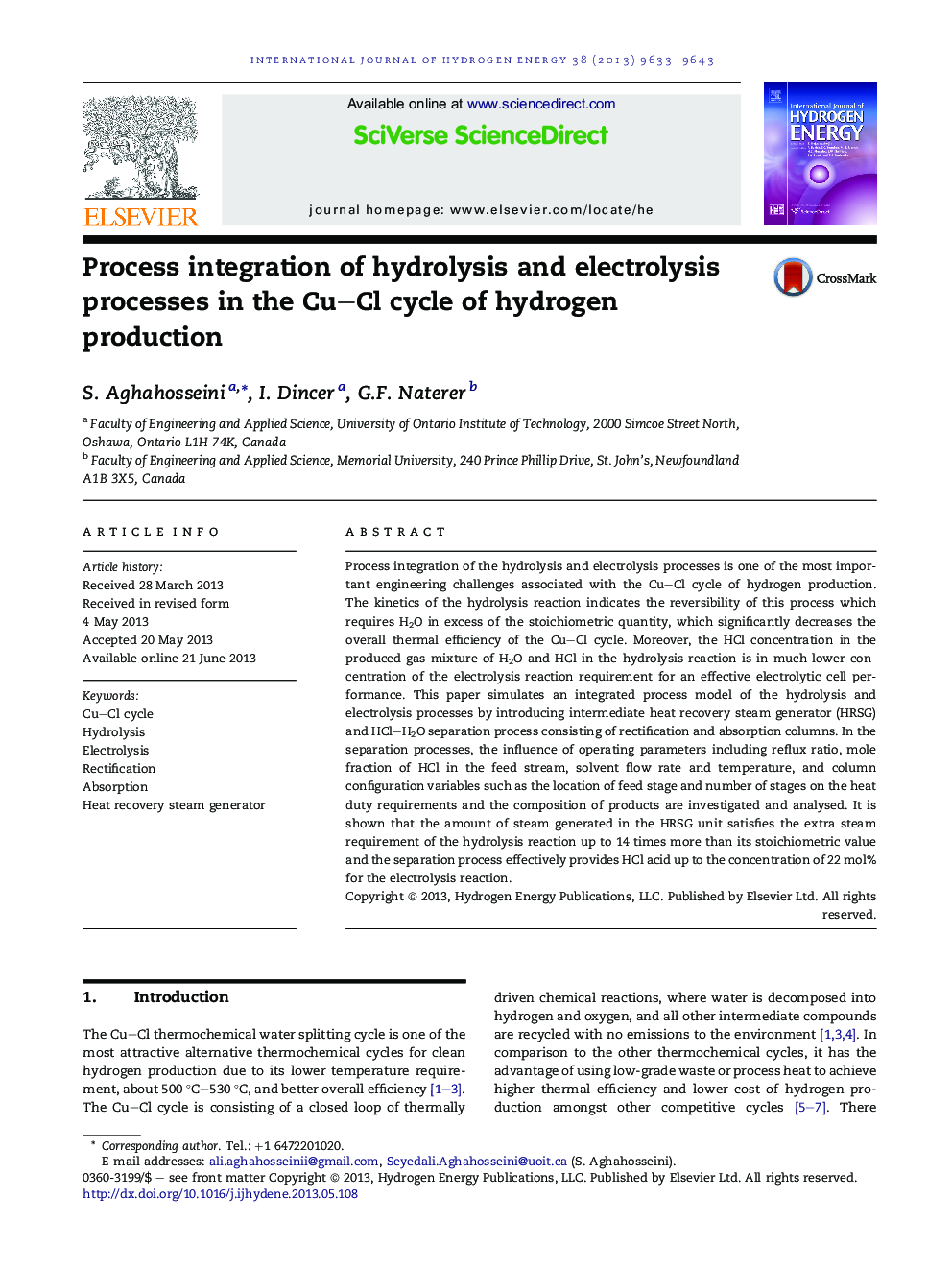| Article ID | Journal | Published Year | Pages | File Type |
|---|---|---|---|---|
| 7722195 | International Journal of Hydrogen Energy | 2013 | 11 Pages |
Abstract
Process integration of the hydrolysis and electrolysis processes is one of the most important engineering challenges associated with the Cu-Cl cycle of hydrogen production. The kinetics of the hydrolysis reaction indicates the reversibility of this process which requires H2O in excess of the stoichiometric quantity, which significantly decreases the overall thermal efficiency of the Cu-Cl cycle. Moreover, the HCl concentration in the produced gas mixture of H2O and HCl in the hydrolysis reaction is in much lower concentration of the electrolysis reaction requirement for an effective electrolytic cell performance. This paper simulates an integrated process model of the hydrolysis and electrolysis processes by introducing intermediate heat recovery steam generator (HRSG) and HCl-H2O separation process consisting of rectification and absorption columns. In the separation processes, the influence of operating parameters including reflux ratio, mole fraction of HCl in the feed stream, solvent flow rate and temperature, and column configuration variables such as the location of feed stage and number of stages on the heat duty requirements and the composition of products are investigated and analysed. It is shown that the amount of steam generated in the HRSG unit satisfies the extra steam requirement of the hydrolysis reaction up to 14 times more than its stoichiometric value and the separation process effectively provides HCl acid up to the concentration of 22 mol% for the electrolysis reaction.
Related Topics
Physical Sciences and Engineering
Chemistry
Electrochemistry
Authors
S. Aghahosseini, I. Dincer, G.F. Naterer,
